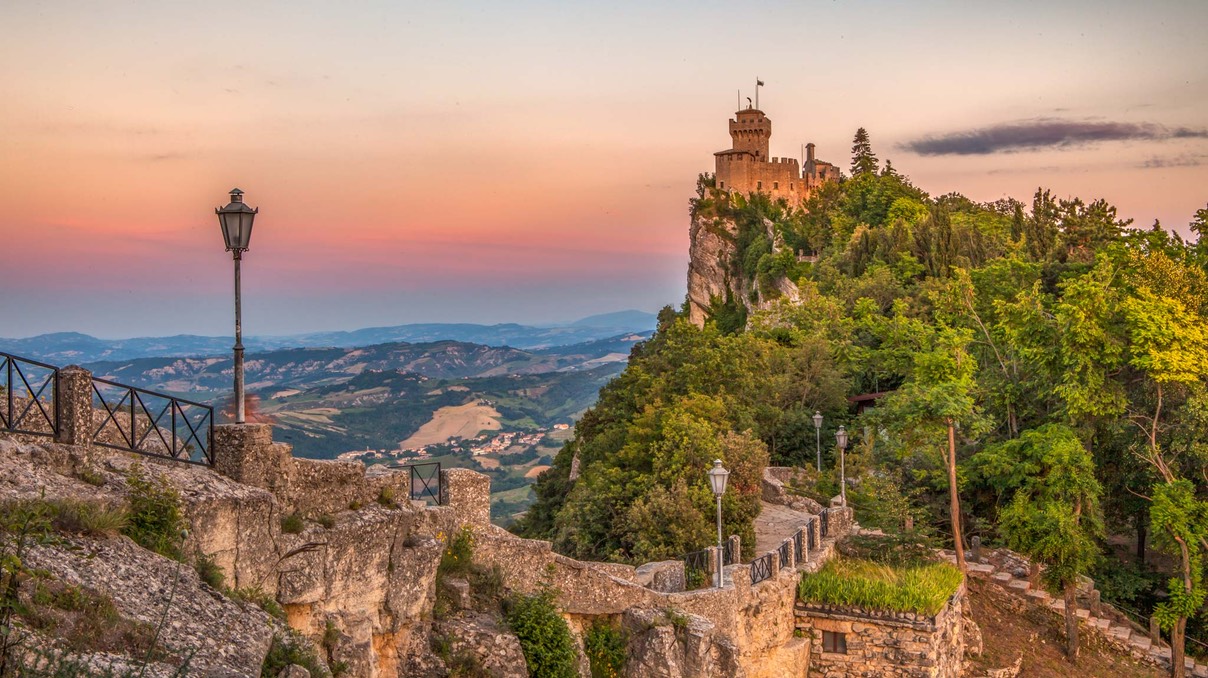Did You Know
Unveiling the Mystery of "Kuchi Zamishi": Understanding Unconscious Eating in Japanese Culture

In the vibrant tapestry of Japanese culinary traditions, the concept of "kuchi zamishi" emerges as a subtle yet significant phenomenon. Translated as "unconscious eating," it delves into the depths of our culinary behaviors, shedding light on a universal aspect of human existence. This blog post aims to explore the intricacies of "kuchi zamishi," navigating its cultural significance and offering insights into mindful consumption.
Discover the hidden depths of "kuchi zamishi," the Japanese term for unconscious eating, in this insightful blog post. Explore the cultural nuances, learn about mindful consumption, and embark on a journey toward holistic well-being.
In a world where mindful consumption is increasingly championed, the concept of "kuchi zamishi" emerges from the heart of Japanese culture as a poignant reminder of the unconscious habits that shape our relationship with food. Translated literally, "kuchi zamishi" encapsulates the act of eating without awareness or consciousness. It delves into the depths of our culinary behaviors, shedding light on a phenomenon that resonates across cultures and borders.
Exploring the Depths of "Kuchi Zamishi"
In the bustling streets of Tokyo or the serene landscapes of Kyoto, one can observe the intricate tapestry of Japanese culinary traditions. Yet, amidst the artistry of sushi-making and the elegance of tea ceremonies, lies the subtle presence of "kuchi zamishi." It is the mindless munching on snacks during a hectic workday or the absent-minded devouring of a comforting bowl of ramen after a long night.
At its core, "kuchi zamishi" transcends mere consumption; it reflects a deeper connection between food and emotion, often intertwined with stress, fatigue, or distraction. This unconscious eating habit not only impacts our physical health but also speaks volumes about our mental and emotional well-being.
Navigating the Culinary Landscape
To comprehend the essence of "kuchi zamishi," one must navigate the multifaceted landscape of Japanese cuisine. From the delicate balance of umami flavors to the meticulous presentation of dishes, every aspect of Japanese culinary artistry exudes mindfulness and intentionality.
Yet, the prevalence of "kuchi zamishi" serves as a poignant reminder of the human tendency to succumb to distraction and haste, even in the realm of gastronomy. In a society that values efficiency and productivity, the act of mindless eating becomes a subconscious coping mechanism, a fleeting moment of solace amidst the chaos of daily life.
Cultivating Mindful Consumption
While "kuchi zamishi" may seem like an inevitable aspect of modern existence, it is not without remedy. Just as Japanese culture celebrates the harmony between food and nature, it also advocates for mindfulness in culinary practices.
By cultivating awareness and presence in our eating habits, we can reclaim control over our relationship with food. Whether through the practice of "shojin ryori" – the Zen Buddhist tradition of mindful eating – or the simple act of savoring each bite with gratitude, we have the power to transcend the grip of unconscious consumption.
Embracing a Balanced Approach
In the journey towards mindful consumption, it is essential to strike a balance between indulgence and restraint. Rather than vilifying "kuchi zamishi" as a mere impediment to our well-being, we can view it as a mirror that reflects our innermost struggles and desires.
By acknowledging the presence of "kuchi zamishi" in our lives, we take the first step towards transformation. Through introspection and self-awareness, we can gradually cultivate healthier eating habits, nourishing not only our bodies but also our minds and spirits.
The Art of Conscious Living
In the realm of culinary exploration, "kuchi zamishi" serves as a poignant reminder of the delicate dance between indulgence and mindfulness. As we navigate the labyrinth of modern existence, let us embrace the wisdom of Japanese culture, weaving mindfulness into the fabric of our daily lives.
From the bustling streets of Tokyo to the tranquil shores of Kyoto, the essence of "kuchi zamishi" transcends geographical boundaries, speaking to the universal human experience. By cultivating awareness and intentionality in our eating habits, we embark on a journey towards holistic well-being, nourishing not only our bodies but also our souls. Let us savor each moment with gratitude and reverence, for therein lies the true art of conscious living.
As we embrace the wisdom of Japanese culture and cultivate awareness of our eating habits, we embark on a journey toward holistic well-being. Let us savor each moment with gratitude and reverence, for therein lies the true art of conscious living.
#KuchiZamishi #UnconsciousEating #JapaneseCulture #MindfulConsumption #HolisticWellbeing #CulinaryTraditions #Mindfulness #HealthyLiving #SelfAwareness #ConsciousLiving #SanjayMohindroo #SanjayKMohindroo #SanjayKumarMohindroo #News
Unveiling the Origin Story: How Jennifer Lopez Inspired the Birth of Google Images

In the annals of technological innovation, the genesis of groundbreaking ideas often emerges from unexpected sources. The story of how Jennifer Lopez's iconic green Versace dress catalyzed the creation of Google Images is a testament to the serendipitous nature of inspiration. Join us as we delve into this captivating narrative, tracing the evolution of a transformative idea born from the intersection of celebrity culture and digital innovation.
Discover the fascinating tale of how Jennifer Lopez's legendary Versace dress led to the inception of Google Images. Unveil the untold story of inspiration and innovation that reshaped the digital landscape forever.
How Jennifer Lopez Sparked the Creation of Google Images: A Tale of Inspiration
In the ever-evolving landscape of technology and innovation, it's often the unexpected sources of inspiration that lead to groundbreaking developments. One such remarkable story revolves around the iconic entertainer, Jennifer Lopez, whose influence transcends the realms of music, film, and fashion. Surprisingly, her impact also extends into the digital sphere, playing a pivotal role in the inception of Google Images.
In the late 1990s, the internet was rapidly expanding, and search engines like Google were revolutionizing how we accessed information online. However, one significant limitation persisted – the inability to search for images directly. Users were confined to text-based searches, making it cumbersome to find visual content efficiently.
It was against this backdrop that Jennifer Lopez, with her captivating allure and widespread popularity, inadvertently inspired a transformative innovation. In 2000, at the 42nd Annual Grammy Awards, Lopez wore a stunning green Versace dress that garnered immense attention and sparked a global sensation. The plunging neckline and exotic jungle print captured the imagination of millions, igniting intense curiosity and desire to view images of the dress.
This unprecedented surge in interest presented a unique challenge for search engines. People wanted to see pictures of the dress, but conventional text-based searches struggled to satisfy this demand effectively. Sensing an opportunity to enhance user experience and cater to evolving needs, the team at Google recognized the importance of enabling image searches.
Thus, drawing inspiration from the fervent desire to view images of Jennifer Lopez's iconic dress, Google Images was born. Launched in July 2001, it revolutionized the way people searched for visual content on the internet. Users could now enter keywords and browse through a vast repository of images, instantly accessing the visual information they craved.
The impact of Google Images was profound and far-reaching. It not only fulfilled the immediate demand for pictures of Jennifer Lopez's dress but also transformed how people engaged with online content. From exploring artistic masterpieces to discovering travel destinations and identifying products, the possibilities became endless.
Moreover, Google Images paved the way for advancements in visual search technology, including features like reverse image search and object recognition. Today, it remains an indispensable tool for billions of users worldwide, shaping the digital landscape in profound ways.
Reflecting on this remarkable journey, it's clear that inspiration can arise from the most unexpected sources. Jennifer Lopez's iconic dress not only captivated the world's attention but also catalyzed innovation in the digital realm. It serves as a testament to the power of creativity, curiosity, and the relentless pursuit of enhancing user experience.
As we continue to navigate the ever-changing landscape of technology, let us draw inspiration from unlikely sources and remain open to the possibilities of innovation. Who knows what groundbreaking developments may lie ahead, sparked by a moment of inspiration as timeless as Jennifer Lopez in her unforgettable Versace dress.
The legacy of Jennifer Lopez's iconic dress extends far beyond the realms of fashion and entertainment—it serves as a symbol of the profound impact of inspiration on technological innovation. As we celebrate the birth of Google Images, let us remember the serendipitous moments and unlikely sources of inspiration that continue to shape our digital world.
#JenniferLopez #GoogleImages #Innovation #Inspiration #DigitalTransformation #TechEvolution #VersaceDress #CelebrityCulture #DigitalInnovation #TechHistory #SanjayMohindroo #SanjayKMohindroo #SanjayKumarMohindroo #News
Unveiling the Quirky Tale: Why People Used to Say “Prunes” When Taking Pictures

Step back in time to the early days of photography, where the art of capturing moments was a far cry from today's instantaneous selfies. Amidst the cumbersome cameras and stiff poses, a peculiar tradition emerged – the utterance of the word “prunes” to induce genuine smiles and laughter from subjects. Join us as we delve into the charming backstory of this curious phenomenon and explore its enduring legacy in the world of photography.
Discover the whimsical tale behind the age-old tradition of saying “prunes” during photoshoots. Uncover the history, significance, and lasting impact of this quirky practice that once brought laughter to the faces of those immortalized in silver halide.
The Quirky Evolution of Photography Lingo: Why People Used to Say “Prunes” When Taking Pictures
In the fast-paced world of photography, trends come and go, but some peculiarities linger in the annals of history, leaving us scratching our heads in curiosity. One such quirk that has puzzled many is the use of the word “prunes” when capturing moments through the lens. Yes, you read that right – prunes, the wrinkly, dried fruit. So, what’s the story behind this curious phenomenon?
To unravel this mystery, we must journey back to the early days of photography, a time when the art form was still in its infancy, and cameras were bulky contraptions requiring careful calibration and patience. It was during this era, in the late 19th and early 20th centuries, that the word “prunes” began to make its curious appearance in the world of photography.
Picture this: a group of people gathered for a photograph, posing stiffly as the photographer readied the cumbersome camera. In those days, capturing an image was no swift affair; it required subjects to remain still for extended periods, often resulting in strained smiles and uncomfortable expressions. To alleviate the tension and induce a more natural demeanor, photographers would often resort to humorous antics or quirky phrases to elicit genuine smiles and laughter from their subjects.
And thus, the tradition of saying “prunes” was born. The word, with its comical connotations and unexpectedness, served as a lighthearted cue for subjects to relax their faces and express genuine emotions, leading to more candid and engaging photographs. The mere utterance of “prunes” would often elicit chuckles and genuine smiles, transforming stiff, formal poses into lively, memorable snapshots of moments frozen in time.
But why “prunes” specifically? The choice of this peculiar word remains shrouded in mystery, lost to the sands of time. Some speculate that its oddness and irrelevance to the task at hand made it particularly effective in breaking the tension, while others suggest that its association with aging and wrinkles added an extra layer of humor to the proceedings. Whatever the reason, “prunes” became a staple in the photographer’s lexicon, whispered with a wink and a smile before the shutter clicked.
As time marched on and photography evolved, so too did the customs and practices surrounding it. The word “prunes” gradually faded into obscurity, replaced by newer, perhaps less whimsical methods of eliciting smiles from subjects. Yet, its legacy remains a charming reminder of a bygone era when photography was as much about human connection and spontaneity as it was about capturing light and shadow.
In today’s fast-paced world of digital photography and instant selfies, the quaint tradition of saying “prunes” may seem like a relic of a simpler time. Yet, it serves as a delightful reminder that behind every photograph lies a story – a moment shared, a memory preserved, and perhaps, a whispered word that once brought laughter to the lips of those immortalized in silver halide.
Timeline for the Phrase "Prunes" in Photography:
1. Late 19th to early 20th century: The tradition of saying "prunes" emerges during the early days of photography.
2. Usage peaks: "Prunes" becomes a common phrase photographers use to induce genuine smiles and laughter from subjects.
3. Evolution of photography: As technology advances and photography evolves, the tradition of saying "prunes" gradually fades.
4. Legacy: Despite its decline, the phrase "prunes" remains a charming reminder of a bygone era in photography history.
So, the next time you find yourself in front of the camera, ready to capture a moment with friends or loved ones, spare a thought for the humble prune and the quirky tradition it inspired. Who knows? A whispered “prunes” might be the secret ingredient to a picture-perfect smile.
Though the days of saying “prunes” during photoshoots may be long gone, its legacy lives on as a charming reminder of a bygone era. Let us cherish the quaint traditions of the past and embrace the stories they hold within each captured moment. Who knows? Perhaps a whispered “prunes” still holds the power to evoke smiles and laughter, bridging the gap between past and present in the timeless art of photography.
#PhotographyHistory #QuirkyTraditions #VintagePhotography #SayPrunes #MemorableMoments #PhotographyLegacy #SanjayMohindroo
San Marino: A Tapestry of Time - Exploring the World's Oldest Country

Nestled atop the Apennine Mountains, San Marino stands as a living testament to history, resilience, and cultural richness. Join us on a journey through time as we unveil the captivating story of the world's oldest country, from its ancient origins to its modern-day prosperity.
Discover the enchanting world of San Marino, the oldest republic alive. Dive into its rich history, explore the cultural tapestry woven through medieval architecture, and witness the enduring spirit that has sustained this microstate through centuries. Join us on an exploration of San Marino's past and present in this illuminating blog post.
Unveiling Centuries: San Marino, The World's Oldest Country
Nestled atop the serene Apennine Mountains, surrounded by the picturesque Italian landscape, lies San Marino—the world's oldest republic. In this informative blog post, we embark on a journey through time to explore the rich history, cultural heritage, and enduring spirit of this remarkable microstate.
San Marino's Ancient Origins:
Dating back to September 3, 301 AD, San Marino traces its roots to the vision of a humble stonemason named Marinus. Seeking refuge from religious persecution, Marinus established a small community atop Mount Titano, laying the foundation for what would become the oldest surviving sovereign state.
Historical Resilience:
Over the centuries, San Marino has weathered the storms of history with remarkable resilience. Unlike its larger counterparts, it has managed to maintain its independence and identity through the fall of empires, the rise of kingdoms, and the turbulence of wars. Today, it stands as a testament to the enduring human spirit and the power of self-determination.
Cultural Tapestry:
San Marino's cultural tapestry is woven with threads of tradition, art, and intellectual pursuits. The UNESCO-listed historic centre of San Marino City is a treasure trove of medieval architecture, including the iconic Three Towers—Guaita, Cesta, and Montale. These ancient fortifications not only offer breathtaking views but also symbolize the steadfastness of this small nation.
The Palazzo Pubblico, adorned with magnificent frescoes, houses the official government chambers and showcases the commitment to democratic principles that have defined San Marino throughout its existence. The city's museums, such as the Museum of Emigration, provide glimpses into the diaspora that has shaped the Sanmarinese identity.
Economic Prosperity:
Despite its small size, San Marino has achieved economic prosperity, thanks to a blend of tourism, agriculture, and its status as a global financial centre. The nation's commitment to innovation is evident in the thriving industries of electronics and ceramics, contributing to its economic stability.
Enduring Traditions:
San Marino cherishes its time-honoured traditions, celebrating them through vibrant festivals and events. The annual Feast of San Marino and the Crossbow Palio are spectacular displays of the country's cultural heritage, drawing visitors from around the world to partake in the festivities.
As we conclude our exploration of San Marino, the world's oldest country, we are left with a profound appreciation for its enduring spirit, rich history, and cultural vitality. From its ancient origins to its modern-day achievements, San Marino stands as a testament to the strength that comes from preserving one's identity against the currents of time. In visiting this microstate, one not only discovers a land of breathtaking beauty but also encounters a living testament to the indomitable human will.
Concluding our exploration of San Marino, we find ourselves immersed in a captivating narrative of endurance and cultural vibrancy. From the ancient mountaintop refuge to the thriving economic centre, it is today, San Marino invites us to appreciate the significance of preserving identity throughout time. Join us as we celebrate the world's oldest country and its remarkable journey through the ages.
#SanMarino #OldestCountry #CulturalHeritage #HistoricJourney #MicrostateMagic #TimelessTraditions #ResilientSpirit #TravelInspiration #SanjayMohindroo